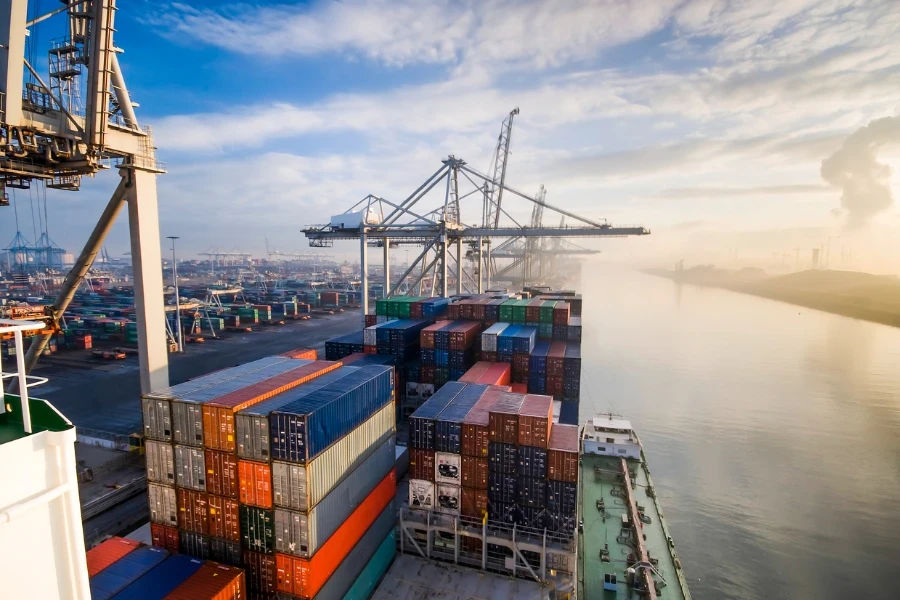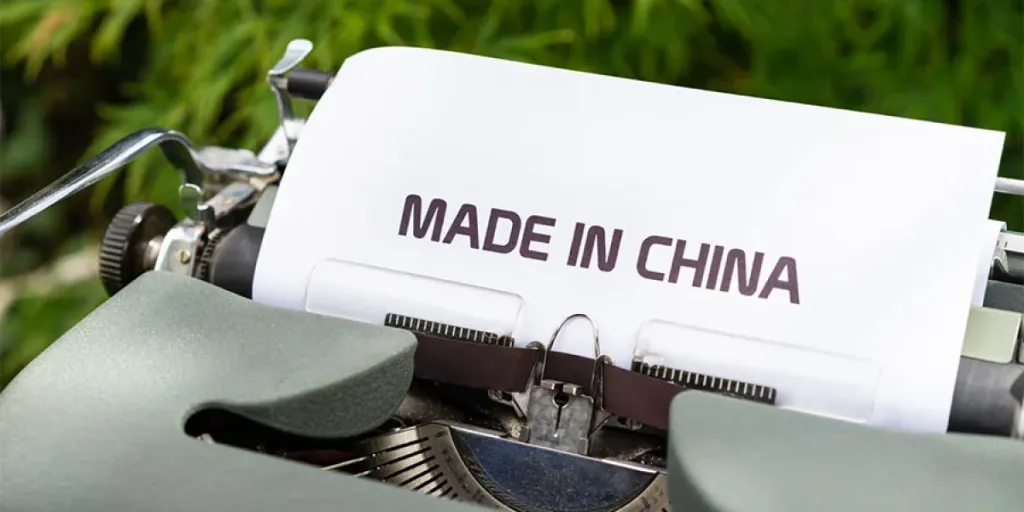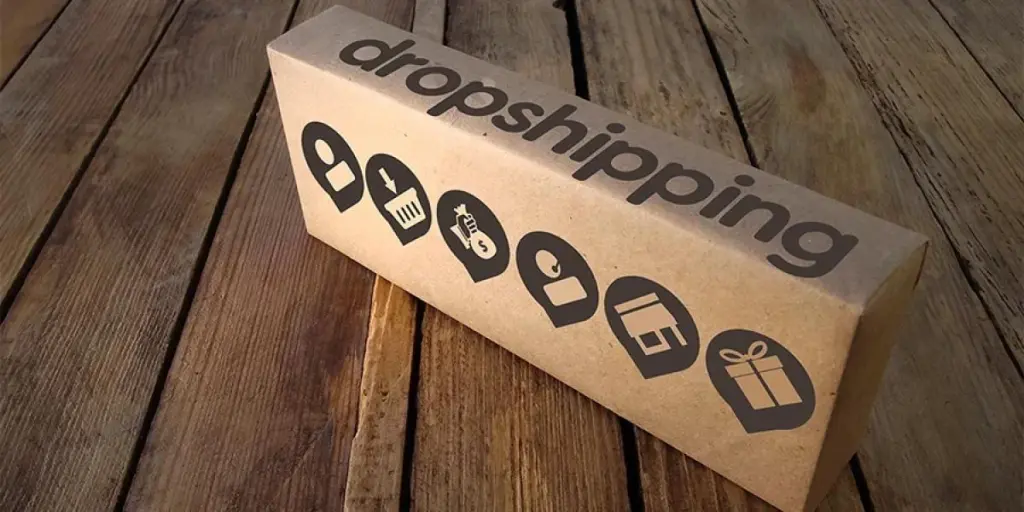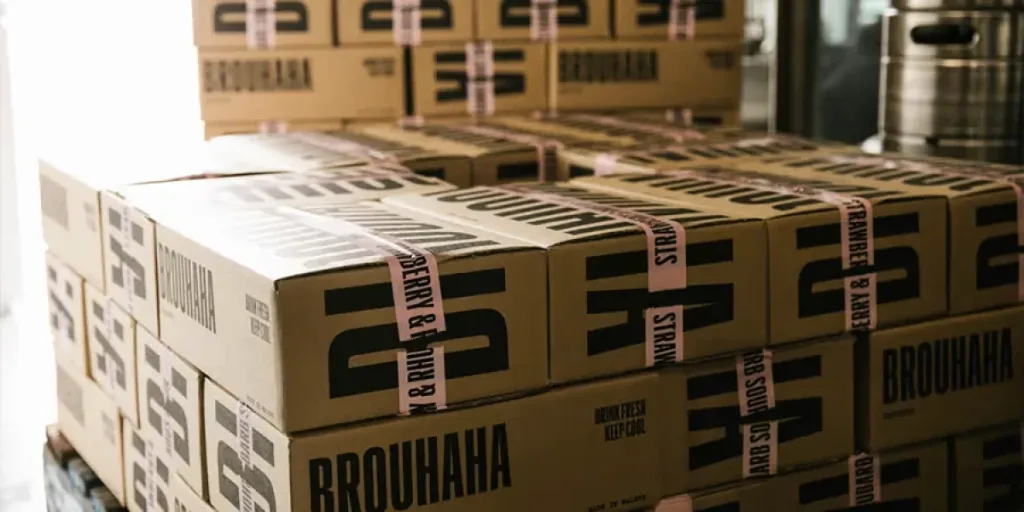Cargo theft can cause big losses and bad press for businesses. CargoNet, a Verisk company, said cargo theft rose by over 57% in 2023 versus the previous year. Thieves often went for expensive goods like electronics, medicine, food, and drink.
To stop these thefts and to safeguard your cargo, you need good methods to ward off, spot, and deal with this problem. This article furnishes you with 10 ways to secure your business’s cargo against theft in 2024 and beyond.
Table of Contents
Understand what cargo insurance covers
Regular safety and security checks
Invest in reliable tracking technology
Implementing high-tech security devices
Comprehensive risk assessment
Vet your employees and partners thoroughly
Use reputable shipping and freight providers
Safe packaging practices
Contingency planning for cargo protection
Regular staff training and awareness of cargo security
Regulatory compliance
Future trends: Securing cargo in tomorrow’s landscape
Understand what cargo insurance covers
Cargo insurance protects businesses when their goods get damaged, lost, or stolen during transit. If any insured event occurs, the policy gives you financial coverage.

Types of cargo insurance
Various kinds of cargo insurance exist. They depend upon how you’re transporting goods, what you’re shipping, and how much coverage you need. Some common types include:
All-risk cargo insurance: It covers all losses or damages from any external event unless expressly excluded. It’s suitable for most cargo types, especially new or costly goods.
Named-perils cargo insurance: This is a more limited type of cargo insurance, covering only the losses or damages caused by the perils that are specifically named in the policy, such as fire, explosion, collision, etc.
Free-of-particular-average (FPA) cargo insurance: The FPA is a clause that says it won’t cover some losses. It doesn’t cover partial losses to the cargo unless from specific incidents. These incidents include a collision, burning, stranding, or sinking.
What is included in cargo insurance?
- Damage: If your cargo gets damaged during transportation, you’re covered.
- Loss: Your goods go missing in transit.
- Theft: Someone steals your cargo.
- Accidents: Incidents or accidents during transit.
- Acts of God: Natural disasters like hurricanes, earthquakes, or floods.
- Fire: A fire damages your cargo while in transit.
- Liability: Legal issues because of the cargo transport.
- Delay: Delivery takes too long, and it costs you money.
- Spoilage: Perishable goods got spoiled.
Regular safety and security checks
Businesses can safeguard their items by frequently carrying out safety and security inspections.
Importance of regular checks
Routine reviews spot troubles early on, preventing major mishaps and safeguarding the shipment. Plus, regular checks show that the shipment meets all needed rules and norms.
Implementing safety check routines
Companies looking to implement safety check rules need to create a systematic structure for regular checks. This structure needs a detailed list that shows items to be inspected like package strength, seals, and locks. Also, it needs to outline how often these checks happen.
Invest in reliable tracking technology
The role of tracking in cargo protection
Using tracking technology is crucial for protecting your goods. It gives live data on goods’ location and status, letting you act quickly to potential risks like loss or theft.
Tailoring tracking technology for your business
Think about your business’s specific needs as you choose your tracking technology. Pick a system that works best for what you want. If you’re shipping perishable items, temperature monitoring is a must. Shipping something valuable? Choose tracking that sends instant alerts if anyone tries to meddle with it.
There are many tracking systems available. You can choose from tools like GPS devices or RFID tags. GPS is great for monitoring cargo on the move – it gives live location updates. On the other hand, RFID tags are perfect for keeping tabs on items in closed areas, like storage buildings.
Implementing high-tech security devices
Impact of security devices on cargo theft
These tools can keep a close eye on goods the whole time it’s being moved. Common tools are GPS trackers and tamper-proof seals. They cut down on robbery chances and make cargo much safer overall.
Choosing the right security devices for cargo
The right safety gear for shipping boosts success and lowers costs. Firms should consider their specific requirements, the worth of items, and shipping routes. This can help identify the appropriate security solutions. Reflect on how automated it is, if it fits well with existing systems, and if it caters to different cargoes. Additionally, pick gear that includes strong encryption and validation features. This prevents tampering or hacking attempts.
Comprehensive risk assessment
Keeping your goods safe requires a solid plan. One suitable method is through a ‘risk assessment.’ It’s about spotting potential problems and then sorting them out.
Identifying potential risks
Firstly, figure out the threats your goods might face while being moved. Theft, mishandling leading to damage, acts of God, or rules and regulations can pose risks.
Addressing identified risks
After knowing the risks, tackle them head-on. Suppose theft is a risk. Then, you could use secure packaging or a tracking system to monitor your goods around the clock.
If improper handling poses a threat, insist on more careful procedures or use specialized packing materials for added safety.
If natural disasters are a concern, consider altering your transportation paths or getting insurance policies that specifically cover these types of events.
If it’s about rules and regulations, keep track of them that are linked to moving goods, and follow them closely.
Vet your employees and partners thoroughly
Implementing a stringent vetting process
Keeping your goods safe starts by trusting the people in charge of them. Both your staffers and your associates should be reliable. Use a strict vetting process to cut down the chances of theft or mishandling. Conduct in-depth background checks, confirm references, and review skills. Such practices stop people with sketchy pasts or bad intentions from getting near your goods.
Continual vetting and assessment
Always keep tabs on workers, even after hiring them. It’s part of sustaining robust safety measures. Keep assessing job performance. Run background inspections. Additionally, ensure that trust in collaborators remains intact. Be vigilant. Act when trouble bubbles up.
Use reputable shipping and freight providers
Choosing a dependable freight provider is vital for any company that needs to ship merchandise across the country or internationally. A reliable freight provider can help you cut costs, meet all deadlines, and satisfy your customers.
How to choose a reliable freight provider
Compare prices and services
Different freight forwarders may have different rates and services depending on type and volume of your cargo, distance, and destination, as well as transportation mode. Choose those with transparent pricing structures indicating all fees or surcharges. Also, look out for providers who offer particular services such as warehousing, tracking, insurance or customs clearance.
Check their reputation and experience
You should partner with the best transport provider in terms of its reputation in the market and experience in handling similar goods. You can find information on reviews, testimonials, references or ratings by other customers as well as industry bodies. Find out about their safety record, observance of regulations and quality standards.
Assess their capacity and equipment
You need to make sure that the freight provider you choose has enough capacity and equipment to handle your freight volume and requirements. You should ask them about their fleet size, availability, and maintenance.
Communicate your expectations and needs
Finally, you need to communicate clearly with the freight provider about your expectations and needs. Establish a good relationship with them and keep them informed about any changes or issues that may affect your freight. Monitor their performance and provide feedback or suggestions for improvement. A good freight provider will listen to your concern and work with you to meet your goals.
Evaluating a shipping provider
Once you have chosen a shipping provider, you should evaluate their performance regularly to ensure that they are delivering on their promises. You can use various metrics to measure their performance, such as:
On-time delivery rate: This is the percentage of shipments that arrive on or before the scheduled delivery date.

Damage rate: This is the percentage of shipments that are damaged or lost during transit.
Customer satisfaction rate: This is the percentage of customers who are satisfied or dissatisfied with the shipping provider’s service.
Cost efficiency: This is the ratio of the total shipping cost to the total revenue generated by the shipments.
Safe packaging practices
Impact of packaging on cargo safety
Safe packaging practices involve choosing the right materials, methods, and tools to ensure that your cargo is well-protected from external hazards and internal stresses.
Best practices in safe packaging
Use durable and appropriate containers that fit the size, shape, weight, and nature of your cargo. Avoid overfilling or underfilling the containers, as this can cause them to collapse or burst.
Use cushioning materials such as foam, bubble wrap, or paper to fill the gaps and prevent your cargo from shifting or colliding inside the containers. Cushioning also helps to absorb shocks and vibrations during transit.
Use sealing materials such as tape, glue, or staples to secure the containers and prevent them from opening or tampering. Sealing also helps to protect your cargo from moisture, dust, or pests.
Use labels and markings to identify the contents, destination, and handling instructions of your cargo. QR codes also help to track and trace your cargo throughout the supply chain and alert the handlers of any special requirements or precautions.
Use pallets or crates to stack and organize your containers and make them easier to load and unload. Pallets and crates also help to distribute the weight and pressure of your cargo and prevent them from crushing or falling.
Contingency planning for cargo protection
Contingency planning for cargo protection involves preparing for possible disruptions or emergencies that may affect the delivery or safety of your goods.
What is a contingency plan?
A contingency plan is a set of actions or procedures that you can follow in case of an unexpected situation, such as a natural disaster, a theft, a strike, or a pandemic. A contingency plan helps you minimize the impact of the disruption on your business operations and customer satisfaction.
Creating a robust contingency plan for cargo
Creating a robust contingency plan for cargo protection requires identifying the potential risks and threats that may affect your cargo, assessing their likelihood and severity, and developing appropriate mitigation and response strategies. Some of the steps that you can take to create a contingency plan for cargo protection are:
- Conduct a risk analysis of your supply chain.
- Evaluate the possible scenarios and consequences of each risk.
- Develop alternative routes, modes, or carriers for transporting your cargo in case of a disruption.
- Maintain adequate inventory levels and safety stocks to avoid shortages or delays in delivery.
- Implement security measures and technologies to prevent or detect theft, tampering, or damage of your cargo.
- Review and update your contingency plan periodically and learn from any incidents or feedback.
Regular staff training and awareness of cargo security

Regular staff training and awareness on cargo security helps to ensure that your employees are familiar with the best practices and procedures for handling, storing, and transporting cargo safely and securely.
Why regular training is vital?
Regular training is vital because it can prevent or reduce the risks of cargo theft, damage, or loss. By training your staff on how to identify and report suspicious activities, how to use security equipment and systems, and how to follow the rules and guidelines for cargo security, you can enhance your protection and deter potential thieves.
What should training cover?
- The types and methods of cargo theft and how to recognize them
- The security policies and procedures for your business and your customers
- The security features and functions of your cargo containers, vehicles, and facilities
- The security measures and protocols for loading, unloading, and transporting cargo
- The emergency response and reporting procedures in case of a security breach or incident
Regulatory compliance
Staying informed about relevant international and local regulations
To protect your cargo, it’s crucial to stay updated on both international and local regulations. This includes understanding safety standards, environmental laws, and export controls that pertain to your cargo.
Ensuring compliance with customs and trade security requirements
Additionally, ensure your business complies with customs and trade security requirements. This involves fulfilling documentation, inspection, and verification mandates of the countries you’re shipping to or from.
Future trends: Securing cargo in tomorrow’s landscape
In the future, cargo protection will rely on advanced tracking systems, AI integration for threat detection, smart packaging with sensors, and collaborative security measures. With cargo theft rising, businesses must understand insurance coverage, conduct regular safety checks, invest in tracking technology, and collaborate for security. Implementing these strategies will ensure that businesses can minimize losses and maintain supply chain integrity.




